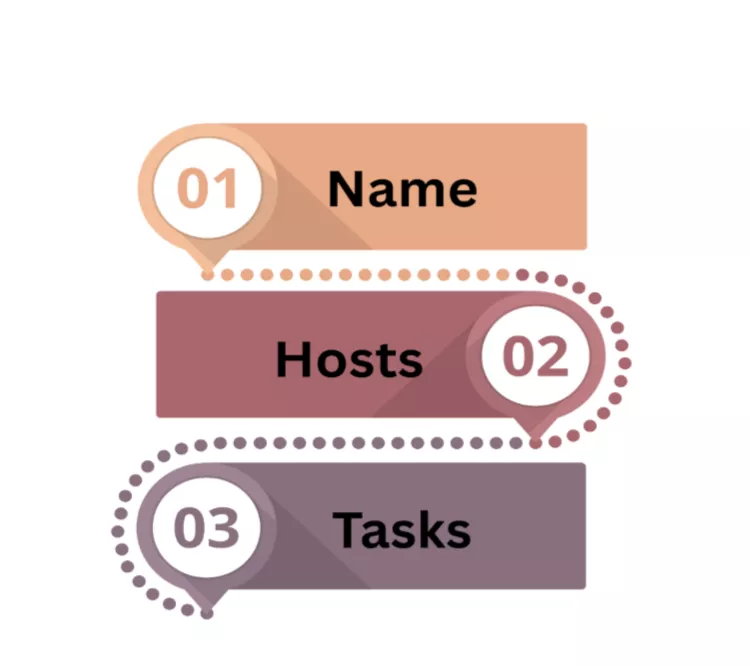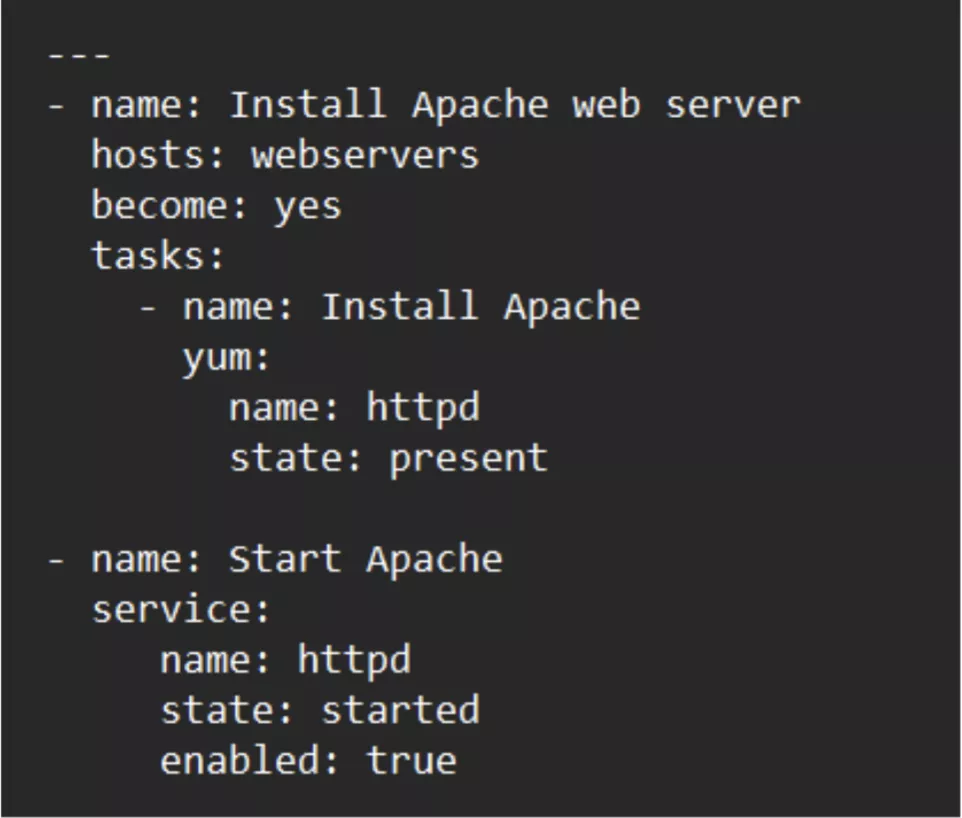When we perform boring tasks that take hours to complete or when we have to perform the same tasks repeatedly, it actually frustrates us all. But why worry when you can use Ansible to automate long tasks and manage multipļe systems all at once.
You can understand Ansible Playbook like your automation script. You know, one of the best parts about using Ansible is its Community Documentation that helps you at every step. You don’t need to invest hours in figuring things out on your own. I mean, why would you, when you are getting a complete guide for free?
The Ansible Community Documentation is a complete guide for everything, from reference syntax to real-world examples. You will find everything here. If you want to learn more about Ansible, Ansible playbooks and Ansible Community Documentation, then read along!
What Is An Ansible Playbook In DevOps?
In DevOps, Ansible Playbooks are like the scripts for automating tasks. It is mainly used for tasks that are time-consuming and repetitive. It basically includes a set of instructions that Ansible uses and performs on remote machines.
For example, if you want to install a web server, then you can use a playbook to install the web server, configure it and start the service. And you know what’s the best part? You can do it all with just one command.
Read More: What Are Containers and Containerization in DevOps? Complete Tutorial For Beginners | [2025]
Ansible Playbook: Key Highlights
- Playbooks are the simplest method of automating repetitive tasks using reusable configuration files.
- In playbook, elements at same level shares the same indentation level.
- You do not need to download Ansible on local system, you can connect using SSH or winRM.
- Variables in Ansible can be defined at one or more than one level based on precedence of variables.
- Ansible Playbooks are written in YAML i,e. Yet Another Markup Language making it easy to read, write and understand.
- Ansible playbooks defines a series of tasks which can execute automatically.
- You can implement reusability including roles, tasks, and more.
- Ansible playbook provides easy integration with CI/CD tools, APIs, , cloud platforms, and more.
What Is Ansible?
Are you also confused regarding what Ansible is? Well, before we dive further into understanding what Ansible playbook and Ansible documentation are, we need to understand what Ansible actually is. Ansible is just an open source IT automation engine that makes complex tasks easier.
Ansible is basically used to perform automated application deployment, configuration management, etc. Also, one of the important things that you must know is that Ansible uses YAML playbooks to automate the process. Hence, Ansible Playbooks are one part of the Ansible tool.
Ansible Playbook Structure
One thing that you must clearly remember is the structure of the Playbook while writing it. A normal Playbook usually has three parts included. A name section, a host section and a tasks section.

- Name: The ‘Name’ section has the descriptive name of the playbook. It is completely optional. You can add if you want to.
- Hosts: The ‘Hosts’ section is the one that tells the target hosts where the playbook will run.
- Tasks: The ‘Tasks’ section contains the actual tasks that are to be executed.
Read More: What is Terraform? Complete Guide on Uses, Workflow & Examples (2025)
How To Write An Ansible Playbook?
When you hear about writing code or writing a playbook, it might sound tricky. But trust me, it isn’t. It is just structured YAML text data. YAML refers to ‘YAML Ain’t Markup Language’, which is easily readable and it is a primary language used for configuration of files and exchange of data.
Let’s take a simple example to understand how to write an Ansible Playbook.

- — It is an indicator that tells that the YAML document has begun.
- – name: Install Apache web server: It is the name of the playbook. It is optional. You can even skip writing the name.
- hosts: webservers: Hosts is where the playbook will run.
- become: yes: This is the command that tells Ansible to use sudo to execute the tasks.
- tasks: Here, you define the tasks that you want to get done.
- – name: Install Apache: Now, this is the name of the task to be performed. This is also optional.
- yum: It refers to the module used to install packages on the target host.
- name: httpd: It is the name of the package that will be installed.
- state: present: This means that the package should be installed only if it is not already present.
- – name: Start Apache: Now, this is a different task to start the Apache
- service: This will manage the services on the target host
- name: httpd: It is the name of the service.
- state: started: This means that the service is to be started.
- enabled: true: It ensures that the httpd service is set to start automatically when the system boots up.
Read More: Why DevOps? Understanding the Shift from Traditional SDLC to Modern Software Delivery
Best Practices For Writing Ansible Playbooks
Do you know what? Writing Ansible Playbooks is not a difficult task, yet many people make mistakes while writing them. You must be wondering why? Well, it is just because of one simple reason, and that is, the lack of knowledge or experience. So here are a few rules and tips that will help you write playbooks in an efficient manner.
- You must always use clear task names.
- You can even try grouping similar tasks together for a better flow of work.
- Remember, never ever deploy anything before successful tests.
- And the most important part that you must not forget is to store you playbooks in Git.
Ansible Playbook Vs Ansible Ad Hoc Commands
Ad Hoc Commands are different from Ansible Playbooks as Ansible Ad Hoc Commands are used for one-time fixes, whereas Playbooks are reusable and are used for long term.
If you are using and repeating the same old Ad Hoc commands, then this is your sign to create a playbook. Have a look at some of the key differences between Ansible Playbook and Ansible Ad Hoc Command.
| Ansible Playbook | Ansible Ad Hoc Command |
| It can be used more than once and for long-term purposes. | It is used just once for quick fixes. |
| It is written in YAML and it is stored as a file. | It is directly executed from the command. |
| It supports various tasks and roles. | It is for simple operations. |
Ansible Community Documentation
Community documentation is best for learners and professionals, it doesn’t matter if you have just started or are working on creating something like a complex automation. The docs have everything you need. From syntax references to example playbooks. You will find everything here. In the official documentation, you will also find the following:
- Module references
- Example playbooks
- Syntax references
- Examples for all the features of Ansible
- Best practices that you must use
- How to fix errors, troubleshooting guides, and much more.
In short, Ansible Documentation is like your one-stop solution for everything you need to know about the use of Ansible. You can check it out here: Ansible Community Documentation.
Ansible Playbook FAQs
Q1. An Ansible Playbook is written in which language?
Ans: An Ansible Playbook is written in YAML, which refers to “YAML Ain't Markup Language”. It is easily readable and understandable by humans. The best part about YAML is that even beginners can easily understand it.
Q2. Is Ansible free?
Ans: Yes. Ansible is completely free to use. You can do your personal projects or your professional or the company’s projects for free. It is an open-source model, which makes it easily accessible to everyone.
Q3. Do I need high coding skills or knowledge to use Ansible?
Ans: No. No advanced coding skills aren’t required to use Ansible. If you are familiar with basic coding and understand the basic Linux commands and logic, then you will be easily able to use Ansible. And with time, you can upskill yourself and gain the relevant skills required.
Q4. Is Ansible the same as Jenkins?
Ans: No. Ansible and Jenkins are both used for different purposes. Ansible is used to automate tasks like configuration and deployments, whereas Jenkins is used to automate the building and testing in CI or CD pipelines.

